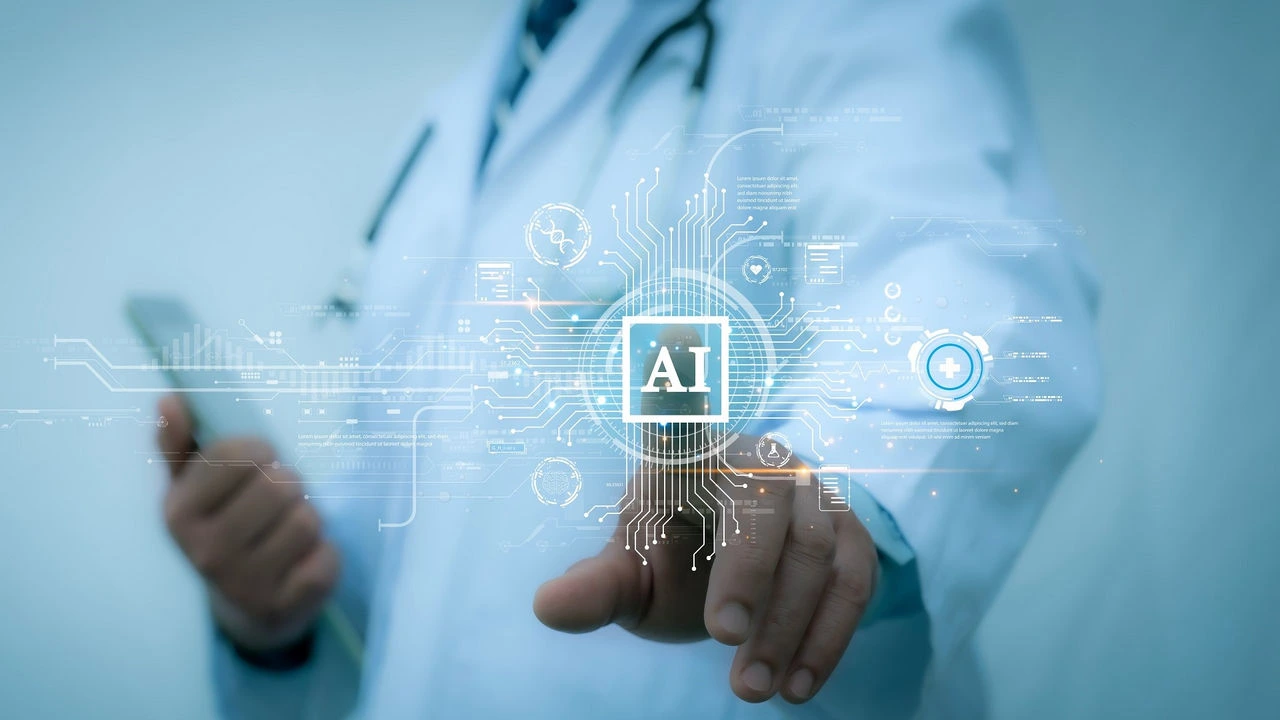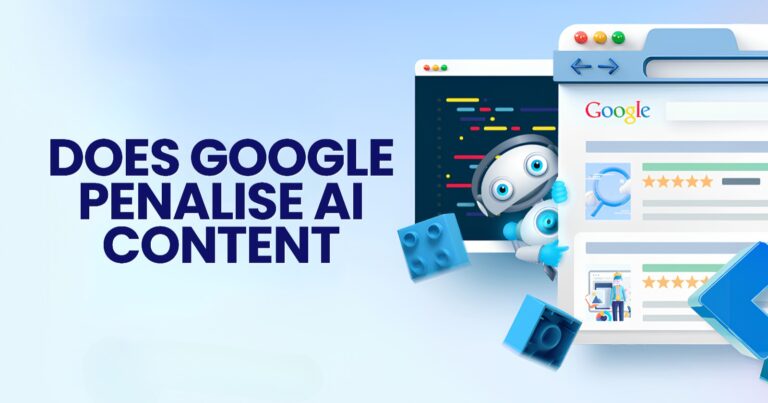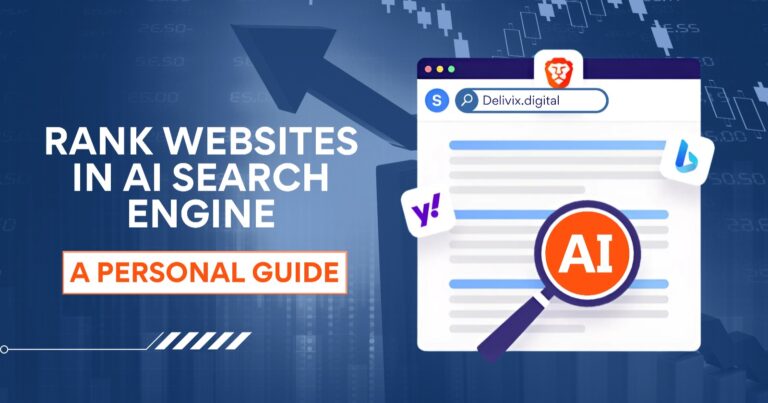Artificial intelligence is everywhere in our lives, from our cars to now our medical facilities as well. It has encompassed every field of life and enhances day-to-day operations at a much faster speed than humans, with more accuracy.
Now, healthcare organisations that are progressive in nature and want to bring real change in medical diagnosis and patient treatment phenomenons are using AI for patient data analysis and so on to improve the time-consuming process.
We have listed down the top healthcare organisations using AI in data analytics examples for readers to help them get real insights into the use of AI applications in hospital data management stay and other domains.
Role of artificial Intelligence in healthcare
Artificial intelligence (AI) uses medical data and finds common patterns to conduct AI-driven data analytics in healthcare to deduce results required for predictive decision-making. There are two types of models that help hospitals and medical organisations conduct data analytics.
Generative AI: It creates new content using the available data sets like images, videos, music, charts, and other patterns.
Predictive AI: It makes accurate predictions and estimations about future events based on vast data sets.
Predictive analytics in healthcare organisations are backed by the predictive AI model that carefully analyses data collected from hospital records or research trials to predict the number of patients with identification who are most likely to develop certain conditions for which the whole process is running.
It uses large data sets to analyse them and predict the more accurate diagnosis and development of disease to help doctors make treatment decisions on time and save patient lives from getting at stake due to late identification of disease in patients.
A large number of organisations providing medical diagnosis and treatment facilities to citizens across the United Kingdom are leveraging AI-powered decision-making in healthcare to manage the beds or patients in the waiting line more efficiently, resulting in better time and patient management.
The National Institute for Health and Care Research has been providing funds to medical organisations looking to develop AI algorithms resulting in more accurate diagnosis and patient treatment using machine learning in healthcare data analysis and other techniques to make rampant increases in the efficiency of managing and treating patients according to the priority they need.
How hospitals use AI for data insights?
Mid and South Essex (MSE) NHS Foundation of Britain provides the best AI use cases in healthcare systems examples as they have used a Deep Medical AI model that uses machine learning to predict patient no shows and short notice cancellations.
Only by using structured data (like patient demographics and appointment response history) and unstructured data (like electronic health record notes) to identify common patterns and decide whether the patient is going to attend the appointment or not.
Deep Medical model uses AI to understand patient response rates and behaviour to develop personalised reminder schedules for patients and then uses automation to send personalised notes about the appointment. It also sends alerts to patients who are fighting with critical diseases, and their one no-show at an appointment can lead them to grotesque consequences and alert the relevant team as well about the patient response.
Want AI solutions for your company?
From chatbots to automation & predictive analytics, we help businesses get the most out of AI.
Boost efficiency. Reduce costs.
Book a ConsultationDifferent types of models used by healthcare organisations developing AI tools
There are different types of language learning and other data interpretation or analysis models used by companies developing AI based tools for improving healthcare efficiency. We have listed some famous models below to help you understand healthcare organisations using AI in data analytics examples.
- Large language model:
Large language model works on a machine learning model that uses natural language to process tasks on a wider scale. Some of the LLM tasks include creating and classifying texts and images, answering questions of the users, and translating conversations between medical practitioners and patients to predict possible symptoms and treatment practices using deep learning algorithms trained on vast data sets.
- Deep learning model:
It is a kind of machine learning model that uses artificial neural networks inspired by the human brain to learn from the vast amount of data available in structured, unstructured, validation, synthetic, and so on.
These deep learning models are usually integrated into the digital systems of healthcare organisations to help them learn and make decisions based on the data without any human intervention instantly. They are widely used in genomics, pathology, and so on.
- Multimodal model:
As the name suggests, it uses machine learning, deep learning, and other models to combine a large amount of data available in different forms, such as text, images, and videos, and then process it to provide accurate determinations and draw insightful conclusions to give close to reality predictions about the patient’s symptoms.
- Foundation model:
Foundation model is based on machine learning that is trained on a vast amount of data to provide instant response about the possible disease of the patient under observation by analysing the symptoms identified by the doctor.
Role of artificial intelligence in enhancing medical diagnosis
Artificial intelligence is playing a crucial role in making the medical diagnosis process easy or more efficient for doctors to reach early disease diagnosis stages and start treating the patient with the most suitable medicines or practices, which are also suggested by different AI models based on the analysis of different data sets.
AI trained on real-time data sets of different hospitals treating, for example, cancer patients of different types and complications simultaneously can easily predict the possible issue with the patient under observation or the medicines or medical procedures that need to be used for better alignment due to the large patterns of data containing history or treatment progress of different patients with same kind of disease.
- AI in detecting heart diseases:
Heart failure is a growing health issue in Britain and is becoming worse with late diagnosis. According to the National Institute for Health and Care Excellence, around 1 in 100 adults have heart failure. It is rising to 1 in 7 people over the age of 85.
It means that some of them are diagnosed in hospitals after several checkups, which should be done in a single visit to the patient. Now, AI is helping medical practitioners in making the diagnosis easy and lowering the heart failure rate.
An easy-to-use ‘smart’ stethoscope can be used to screen patients for heart failure in primary care. It uses artificial intelligence-based technology to identify diseases in people with more than 90% accuracy, which is close to perfection.
It uses sensors to record an ECG electrocardiogram, a measure of the heart’s electrical activity, by incorporating AI programmes to analyse the reading while putting it at the chest of the patient, according to a study conducted by the National Institute for Health and Care Research.
The smart stethoscope correctly identified 9 out of 10 times, which is impressive for the doctors. They are of the view that it can be used as a clinical decision support tool that can help them reduce the time being spent in diagnosis and save hospitals from being overloaded with patients.
- AI in cancer diagnosis:
IBM Watson for Oncology analyses patients’ data to diagnose diseases and recommends treatment plans for cancer patients. It uses data sets to suggest personalised treatment for every patient with similar or unique symptoms to offer AI-powered decision-making in healthcare.
- AI in healthcare data management:
There is an evident chance that highly valuable information gathered after extensive research and trials can be lost in the piles of information files stored in the lab’s repository.
But AI helps in processing large chunks of data into small and manageable parts that can accelerate the discovery of new drugs, preventative medicine creation and diagnosis of patients with unique symptoms by connecting the information dots and showing the possible results, saving time and resources from getting invested.
It helps healthcare administrative staff to increase their efficiency and use data more systematically for daily operations and patient cure.
- AI in robotic surgery:
Healthcare organisations are using AI robots to conduct minor or even open heart surgeries to save the time spent per patient and increase the accuracy level. A doctor can control the mechanical arm of the robot by sitting at a computer console, and the robot offers a three-dimensional, magnified view of the whole operation theatre.
Some studies show that surgeries conducted through robot assistance lead to fewer surgery related complications, less pain, and a quick surgical process as compared to humans.
- AI in patient experience:
Some healthcare organisations like Barts Health are using AI to prioritise patients with colon cancer for instant response and treatment. By walking in the footsteps of Barts, several healthcare organisations across the world are using AI to offer digital communication to patients, auto appointment reminders, tailored health tips, and suggested plans to follow for the patients.
The process of automation, as discussed above, explains very well how hospitals use AI for data insights and getting predictive measures suggestions from the data charts or graphs. It has helped hospitals to manage patients more efficiently and keep the bed space available for emergency patients by providing a seamless patient experience backed with AI.
- AI in drug discovery:
According to some estimates, the drug discovery and development industry is spending around $1.3 billion and thousands of human labour hours on conducting clinical trials, and the thing to be worried about in this whole expensive process is that only 10% of the trials turn into successful drug discoveries.
This means a large chunk of capital gets wasted due to human inefficiencies, but the entry of AI in the drug discovery industry has turned the tables and sped up the process by using trained algorithms that are trained on AI models.
It has accelerated the success ratio by increasing the efficacy of the trial by predicting any side effects and what kind of volunteers are needed to get accurate results so that the time or money doesn’t get wasted.
- AI in medical diagnosis:
AI is predicting and diagnosing disease at a faster rate than most seasoned medical professionals dealing with patients, and the chance of human error is higher than AI models. It uses predictive models that are trained upon large data sets to provide instant results, including disease names along with the symptoms occurring in most cases.
Every year, around 400k patients who are hospitalised, suffer from preventable diseases, but 100k of them are prone to embrace death due to late diagnosis or slow process. AI-based diagnostic processes are helping healthcare organisation decrease the death rate by becoming a helping hand of them in a real sense.
Top 10 healthcare organisations using AI in data analytics examples
To provide real-life examples of AI in healthcare data analysis and other domains of medical studies and diagnosis, we have created a list of the top 10 healthcare organisations using AI in data analytics examples for readers to better understand the vast application base of artificial intelligence in the healthcare industry.
- Google Health/ DeepMind:
Google has worked in a real sense to help medical practitioners and patients at the same time to get back to a healthy life by developing an AI-based solution that can identify breast cancer in patients using algorithms trained on different models.
In September 2019, DeepMind’s health team merged with Google Health with a vision to build healthcare products that help practitioners do early diagnosis and save patients from getting into deathly conditions. Both teams are working together to push boundaries and tap into AI’s potential to be used in lung cancer and breast cancer screening for early diagnosis.
- Nabla:
Nabla is a forward thinking company that has created an AI Copilot that automatically drafts medical notes based on the conversation of the doctor and the patient. Resulting in saving time for the healthcare professional in drafting notes separately and reducing the risk of errors by making instant documentation.
It also handles routine patient inquiries to free up more time for the doctor to spend on more complex tasks like reading the patients’ genetic history for the right diagnosis. Healthcare professionals are also using its AI-based database that provides instant access to the required medical information, resulting in better decision-making.
Nabla has used natural language processing (NLP) and machine learning models to help practitioners streamline their clinical workflows and enhance the overall healthcare quality.
- Butterfly Network:
Butterfly Network is a famous startup that has started working in 2011 and created a handheld portable ultrasound machine that makes both MRI magnetic resonance imaging and ultrasound cheaper and more efficient than the traditional machines.
The portable machine of Butterfly Network uses a single silicon chip that can emit any type of transducer (linear, curved, or phased), making a whole body image from a single probe possible. Its work is based on AI-trained models working in collaboration with semiconductors and cloud technology in a hand device.
- Tempus Radiology:
It was formerly known as Arterys and was acquired by Tempus Labs in October 2022, excelling in precision medicine, AI and imaging. The research team of Tempus focused on making the cloud technology, artificial intelligence, and medical imaging technology meet at one point and produce a way to get faster radiology examinations and reduce missed detections with precision.
Tempus Lab is the world’s largest library of clinical & molecular data and an operating system that makes the data accessible and useful for radiologists and oncologists looking to analyse images. It helps them to get automated image analysis, quantifying lessons, tracking disease progression, and generating detailed reports.
It seamlessly gets integrated with the hospitals’ data management systems and enhances workflow speed and diagnostic accuracy across various medical fields, such as oncology, cardiology, and pulmonology, by providing AI driven technology that supports precise and timely decision making.
- Atomwise:
Atomwise had visioned to reduce the medicine development costs by using a network of supercomputers that can predict in advance from the existing database of molecular structures which potential medicines will work or which will not against the data entered by the researchers.
It uses convolutional neural networks, an AI technology similar to the one that is used in self-driving cars as well. Atomwise uses large data sets available in the database to predict the binding of small molecules to proteins and identify an effective and safe drug candidate.
- MySense AI:
MySenseAI is a well-being monitoring platform that uses established patterns using IoT sensors related to the activities of daily life. It helps patients monitor their health while being at home and get alarmed instantly when their health deteriorates.
A well-known South Warwickshire NHS Foundation Trust member is in conversation with the MySenseAI team to help their patients remain at home using their devices and avoid repeated hospital visits by getting instant health indicators.
- Diabeloop:
It is an AI-based solution that automatically calculates the insulin dose a patient needs throughout the day for type 1 diabetes patients and administers them in an automated and personalised manner.
According to the 12-month data of Diabeloop, patients now spent less than 20 minutes per day maintaining hypoglycemia (low blood sugar levels) using the auto-calculated suggestions.
- Viz.AI:
Viz.AI has developed an AI-powered platform that rapidly analyses medical images to identify suspected diseases, such as strokes, aneurysms, intracranial haemorrhages, and so on, to accelerate the diagnostic process to help medical practitioners make faster treatment decisions and potentially improve patient outcomes.
It is named as Viz.ai One, and it works as a communication tool that facilitates seamless collaboration among multidisciplinary care teams working side by side on one patient. Several healthcare organisations have used this to transform the way they deal with critical care patients.
- Hippocratic AI:
Hippocratic AI has introduced AI nurses to replace the human nursing staff and free them to focus on more complex tasks instead of calling up patients for checkups.
These Hippocratic AI nursing agents are based on a large language model (LLM) and NVIDIA’s technology, and in some tests, it has outperformed human nurses in tasks like identifying medication impacts on patients and detecting toxic drug dosage side effects on patients.
It costs around $9 per hour and is the best assistant to healthcare professionals by handling no-diagnostic tasks efficiently and speeding up the treatment process. These AI nursing robots can handle routine patient calls to book appointments, non-emergency medical interactions, and similar tasks more efficiently than human staff.
Hippocratic AI has developed these nursing robots to reduce the medical care costs that are being spent by hospitals on staff dealing with patients.
- Woebot:
It is an AI-powered mental health assistance providing platform that offers on-the-go assistance to teenagers and adults looking for consultation regarding issues like depression, panic attacks, and so on on their smartphones.
This app uses cognitive behavioural therapy tools to provide communication support like a trained psychologist or psychiatrist but without requiring the patient to leave their home to attend an in-person session.
A news report has found that the app Woebot has successfully helped a large number of mental health patients and helped people get out of depression and other illnesses using the analysing capabilities to treat symptoms.
Read More: What Is the role & potential of AI in healthcare?


